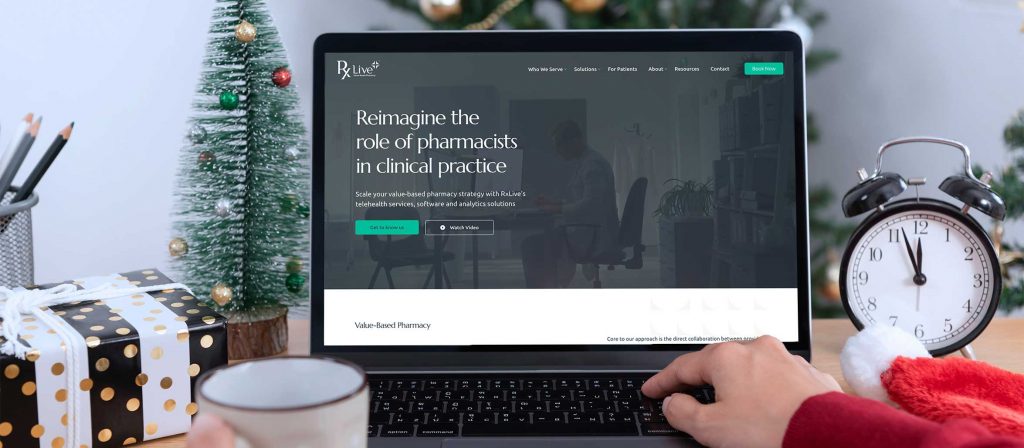Celebrating AmCare clinical pharmacy innovations and pharmacists across the country
RxLive has been busy since launching the Collaborative Practice last month. What’s most on our minds: the complexities of how organizations struggle to manage specialty spend.
More and more, primary care physicians are operating without adequate access to specialists – both for the disease states they’re treating and the pharmacotherapy involved in developing effective plans of care.
To help, we’ve developed an algorithm to guide how networks balance biologic utilization. And we’re continuing to refine My.RxLive to integrate clinical decision support, which will help guide PCPs tasked with treating patients who might require access to specialty medications.
If you’d like to chat more about it, or share the work you’re doing, please be in touch.
All the the best –
The team @ RxLive
Question for the Pharmacists
Each month we will post a clinical pharmacy practice-related question. The results will be listed in next month’s edition of The Collaborative Practice.
This month’s question is related to the organizational structure for pharmacists practicing population health and/or conducting clinical interventions – please share your response by following the link below.
Sign-up for our Newsletter, The Collaborative Practice, here.
Designing specialty pharmacy protocols
This month, we spoke with Kristi Stice of University Health KC about the power of clinical pharmacists designing protocols for management and delivery of specialty medications.
At the start of her career, she says, “it was difficult to convince providers about the benefits of embedding pharmacists in their clinics.”
But the clear value of embedded pharmacists quickly drove a change of opinion.
- Kristi shares how “when pharmacists assist patients in between visits, they can help intervene to support optimal outcomes – and help all members of the care team work at the top of their license.”
Such outcomes depend on proactively reaching out to patients. In Kristi’s network, “when a patient is new to specialty therapy, a pharmacist will do monthly calls for the first three months. Then, if the patient is stable, outreach can happen up to every six months.”
But extending the time between outreach doesn’t leave patients without a resource. “Anytime patients need a refill,” says Kristi,” an ambulatory medication access coordinator reaches out to answer patients’ questions and, as necessary, brings the pharmacist back into the loop.”
The impact of this outreach is clear: patients access the right medication at the right time – at the right dose, in the right cadence – without intolerable side effects.
As always, tracking performance is important. But, as Kristi notes, “there aren’t many standards for specialty clinical KPIs like there are for fields such as primary care.”
That lack of standardization, however, offers room for innovation.
“There are validated tools like the PROMIS 10 and the RAPID3 that we can use in some of our rheumatology patients,” Kristi explains, “and PROMIS 10 can be used across multiple disease states.
“That’s what we track to see how we can improve. But we also track patient satisfaction – and we have very highly satisfied patients –because we know patient satisfaction is important.”
Interested in more insights? Read the transcript of the full interview.
Stories we’re following
From accelerating fulfillment through automation to improving the patient-pharmacist relationship, here are five stories that have our attention near year’s end:
Accelerating specialty prescribing through automation
To support both providers and patients through the specialty medication journey, we must first understand the challenges they face. Technology-driven processes that streamline workflows, close patient health information gaps, and accelerate specialty time to therapy help recognize – and meet – these challenges.
Study supports feasibility of integrating specialty pharmacists in health systems
Integrating specialty pharmacists into health systems may help promote the safe and effective use of biologic treatments. Research connects this result to improvements including scheduled support and access to online medical records.
New report from GoodRx shows positive impact of giving pharmacists the power to prescribe
Research shows pharmacists with greater prescribing authority improve patients’ access to the medications they need to improve their health. The reason: improved access to care. The average person sees their pharmacist 12x more often than their physician.
Improving the patient-pharmacist relationship in four easy steps
The medication expertise and knowledge of pharmacists is underutilized and underappreciated. As providers and their staff are stretched thin, pharmacists are uniquely positioned to support care teams and patients alike.
Why health systems are turning to specialty pharmacy to boost performance
Integrated specialty pharmacy benefits both healthcare networks and their patients. Tracking demand for treatments and comprehensively managing med regimens leads to improved health outcomes and stronger revenue streams.
Food as medicine?
That’s the question Derek Thompson recently asked readers of his Work in Progress newsletter. Workers from all walks of life – including pharmacists – responded. But we’re particularly buoyed by a data scientist’s reminder that STEM jobs are creative, too.
Why? The folks at RxLive are all drawn toward working on creative solutions to complex problems, especially how to solve issues around polypharmacy (as the pharmacist surveyed mentioned).
Each edition of Thompson’s newsletter dives into thorny issues around work and technology in American culture. Sound up your alley? Issues are archived online.





